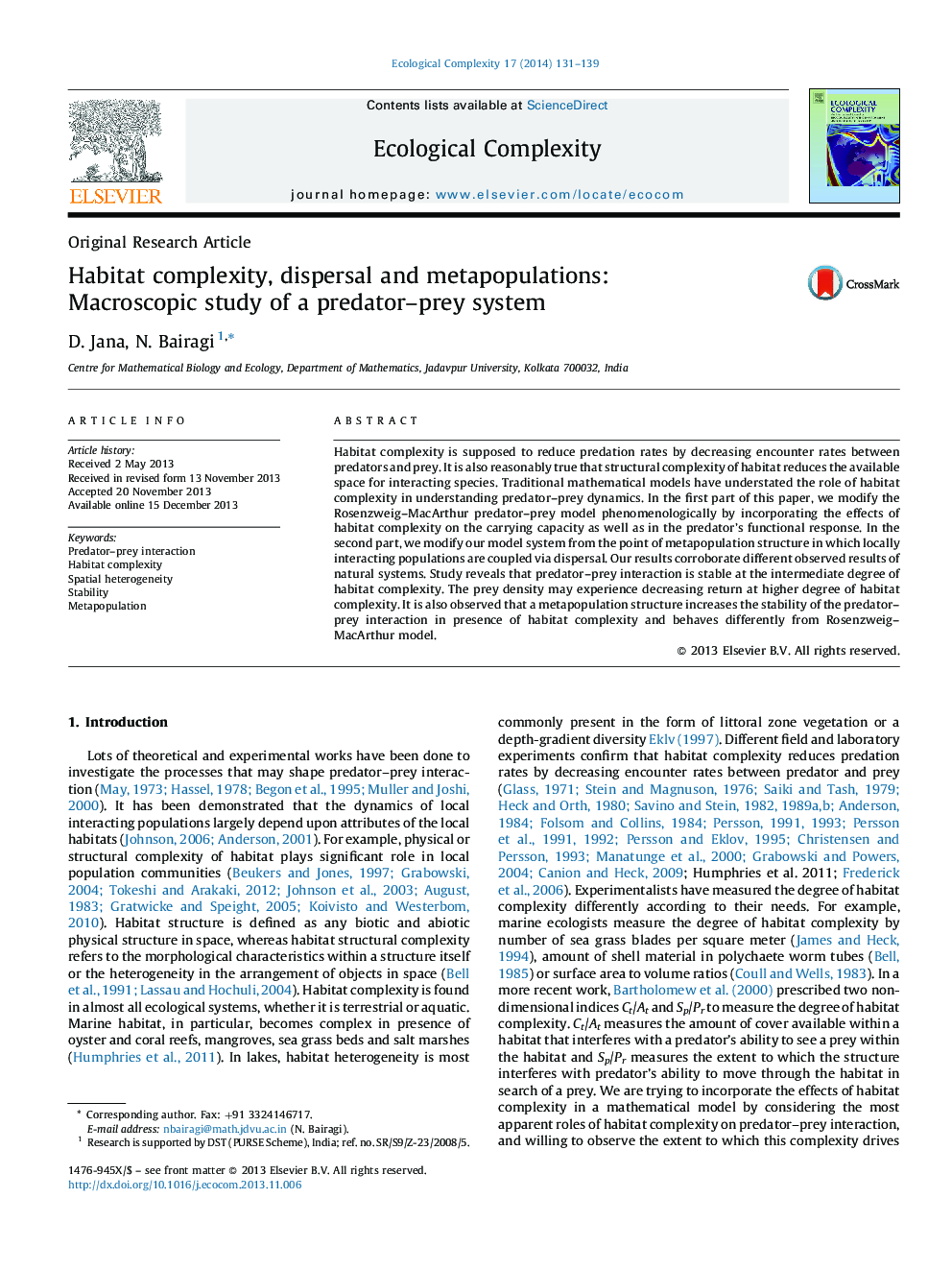| Article ID | Journal | Published Year | Pages | File Type |
|---|---|---|---|---|
| 4372473 | Ecological Complexity | 2014 | 9 Pages |
•We first study a predator–prey model with habitat complexity.•Subsequently we modify our model system from the point of metapopulation structure.•Our results corroborate different observed results of natural systems.•The predator–prey interaction is stable at the intermediate degree of habitat complexity.•The prey density increases with habitat complexity but then follows decreasing return.•A metapopulation structure increases stability of the system in presence of habitat complexity.•General notion of dispersal is not necessarily true in case of a complex habitat.
Habitat complexity is supposed to reduce predation rates by decreasing encounter rates between predators and prey. It is also reasonably true that structural complexity of habitat reduces the available space for interacting species. Traditional mathematical models have understated the role of habitat complexity in understanding predator–prey dynamics. In the first part of this paper, we modify the Rosenzweig–MacArthur predator–prey model phenomenologically by incorporating the effects of habitat complexity on the carrying capacity as well as in the predator's functional response. In the second part, we modify our model system from the point of metapopulation structure in which locally interacting populations are coupled via dispersal. Our results corroborate different observed results of natural systems. Study reveals that predator–prey interaction is stable at the intermediate degree of habitat complexity. The prey density may experience decreasing return at higher degree of habitat complexity. It is also observed that a metapopulation structure increases the stability of the predator–prey interaction in presence of habitat complexity and behaves differently from Rosenzweig–MacArthur model.
